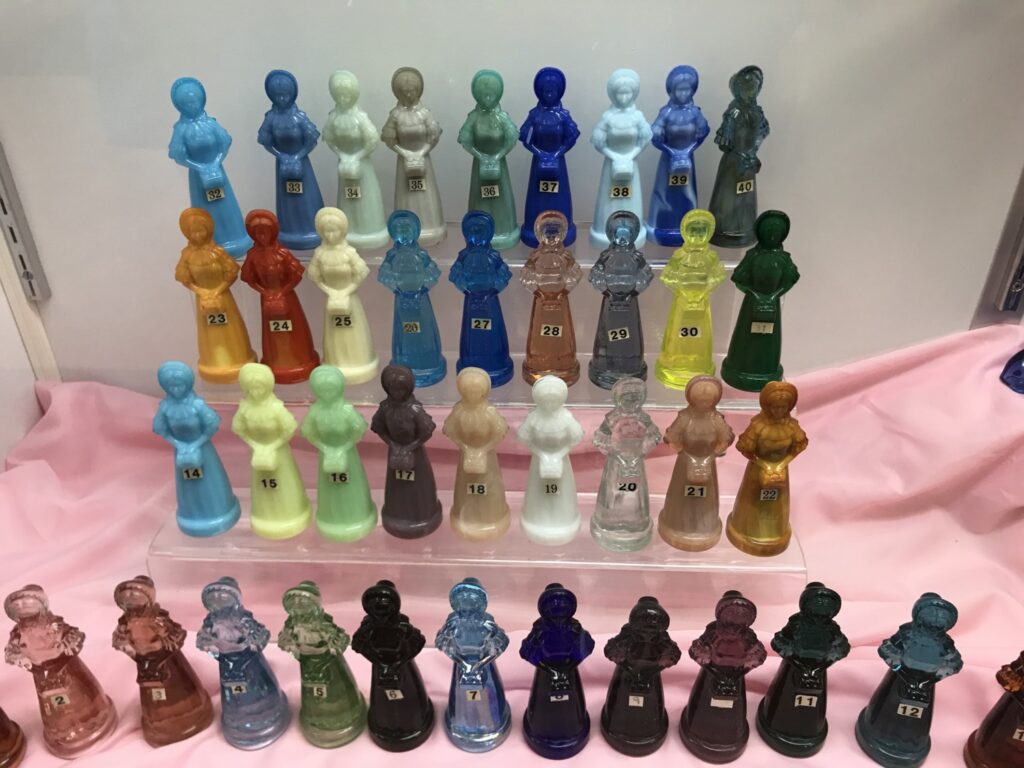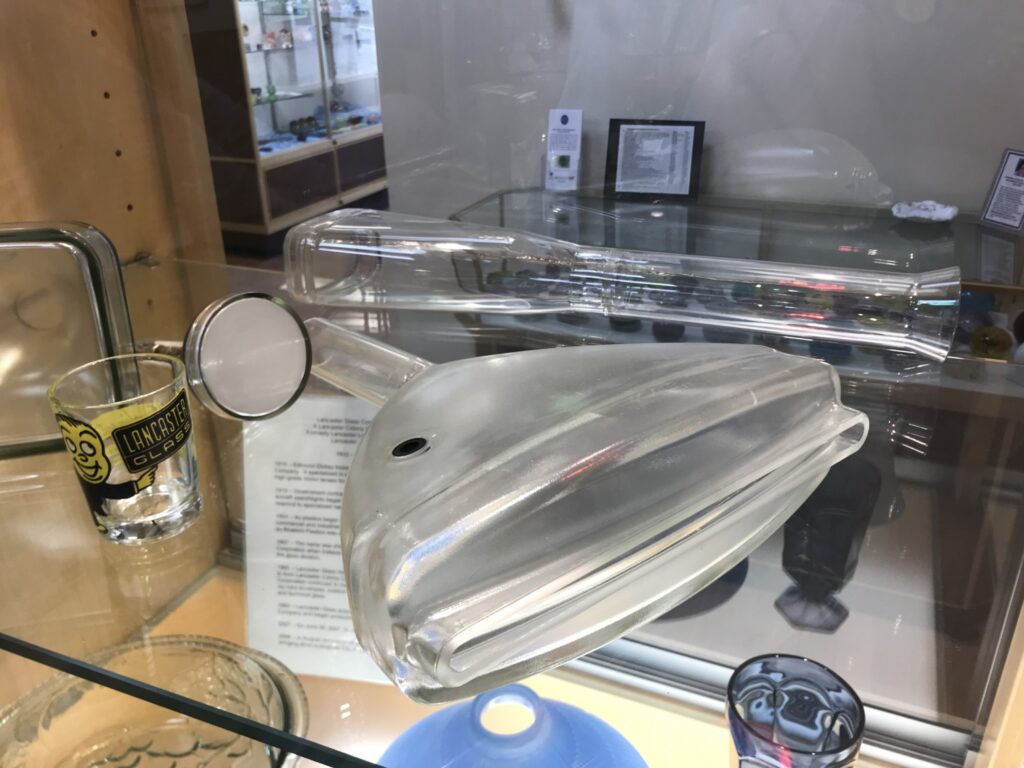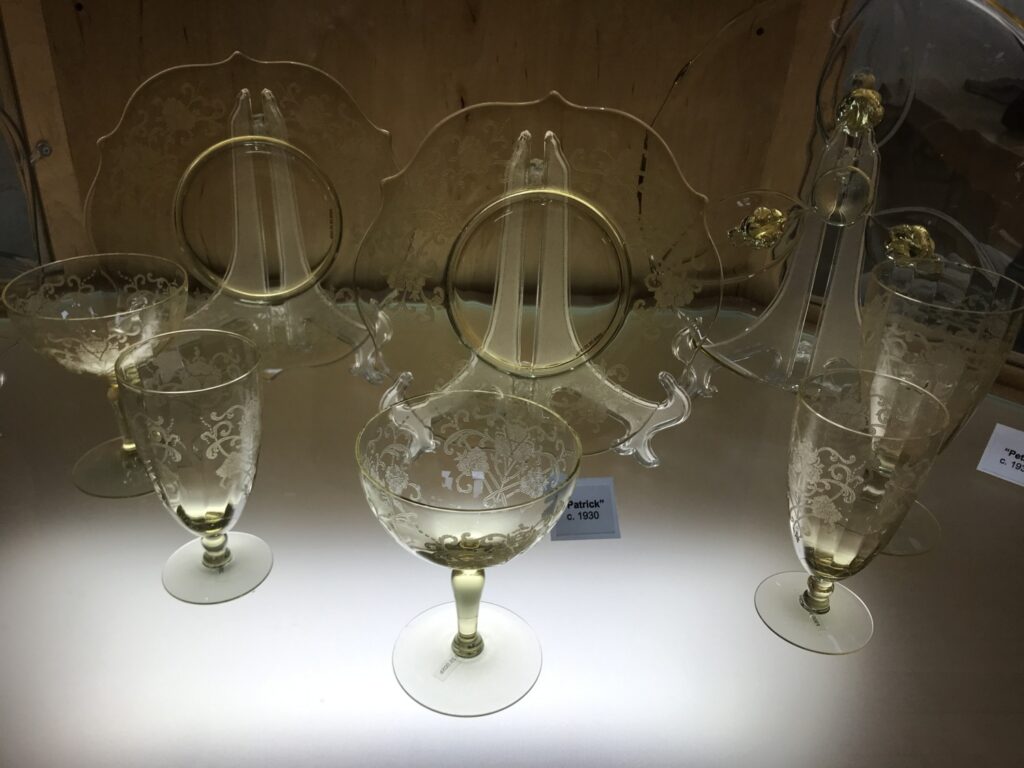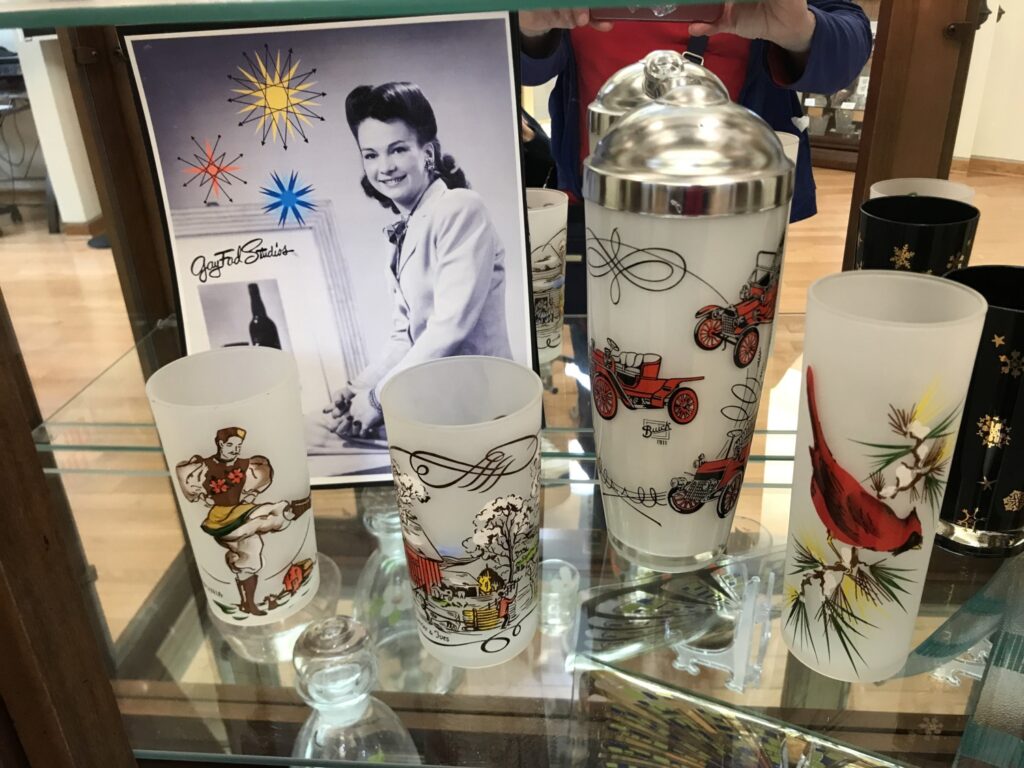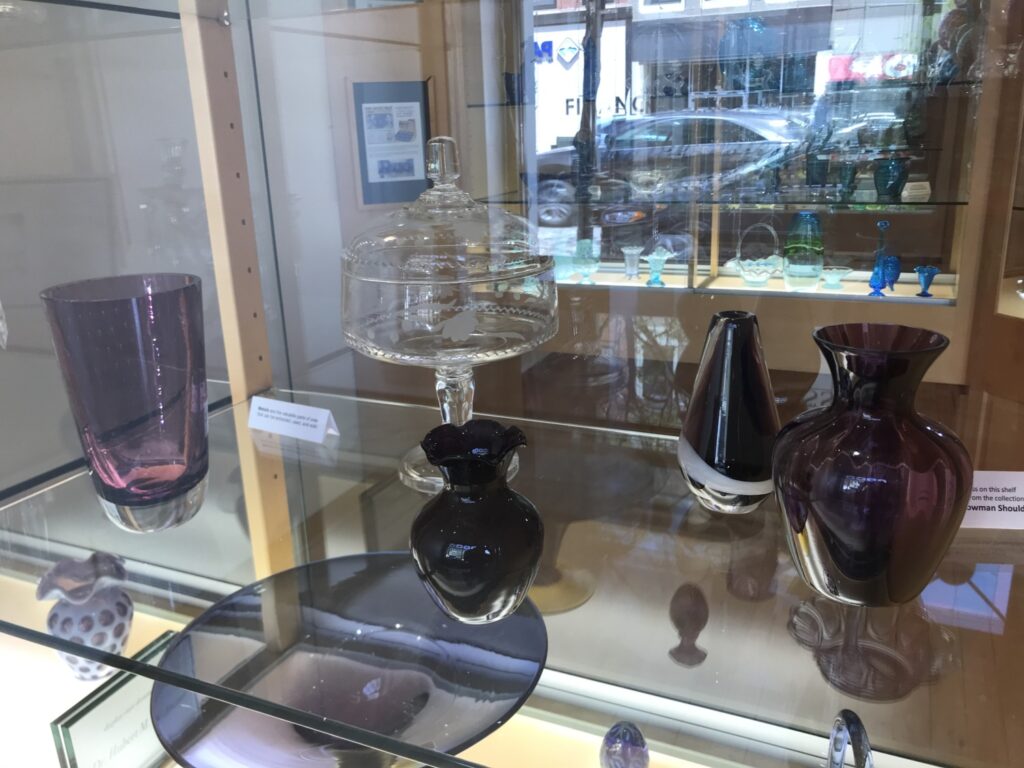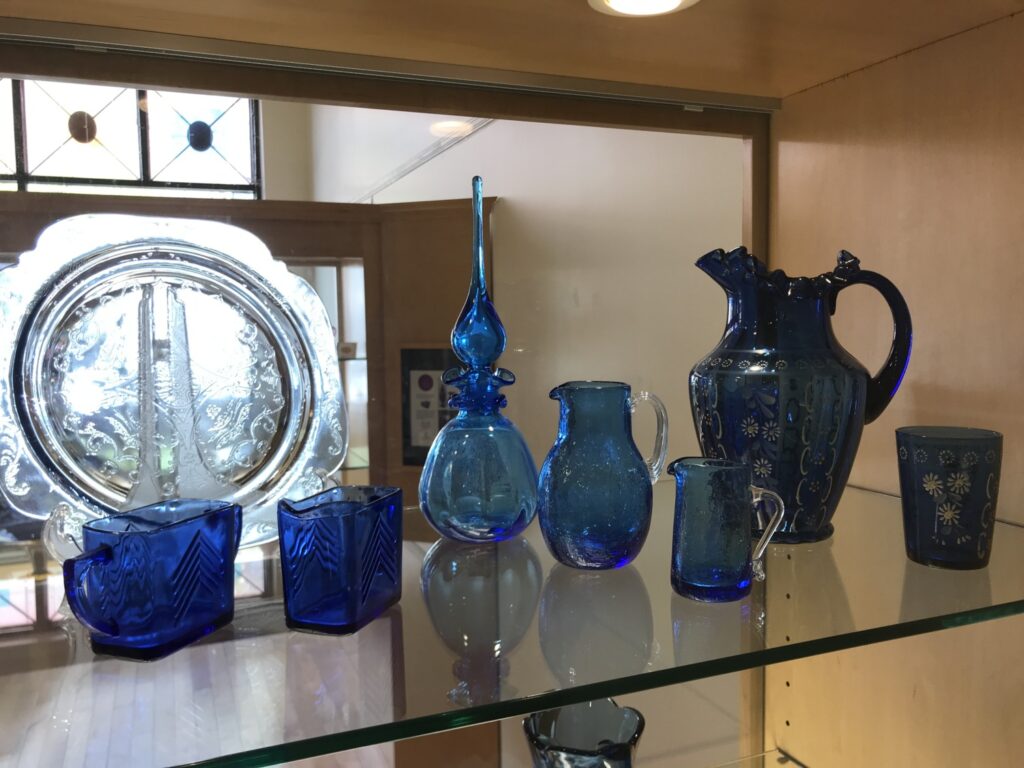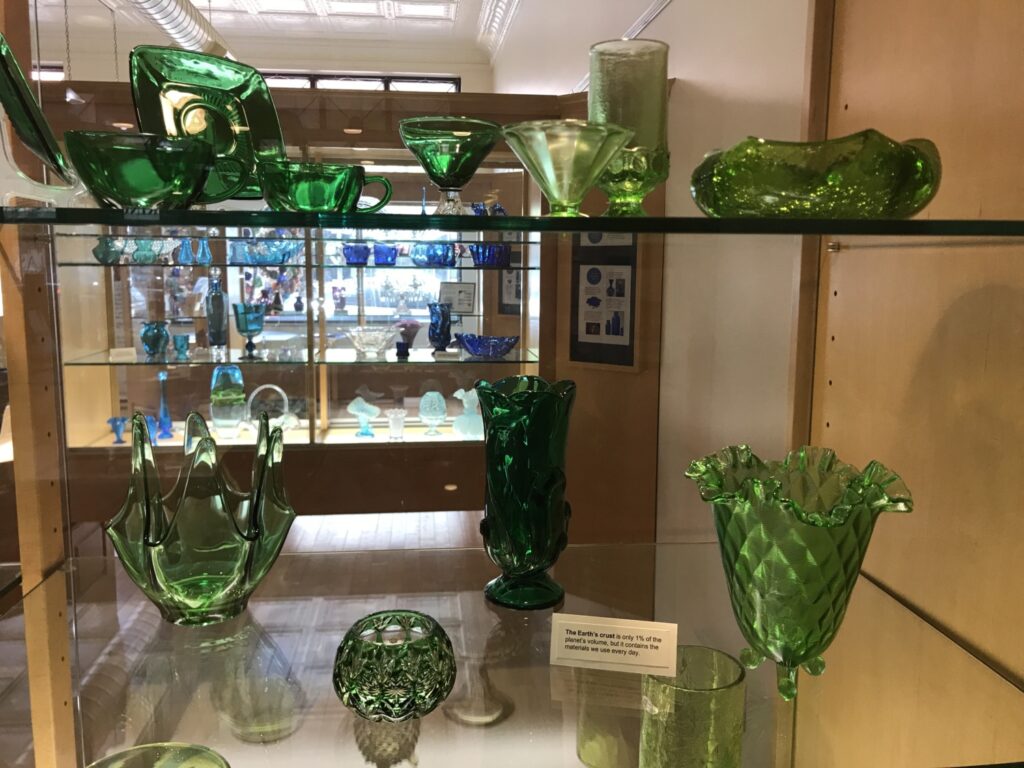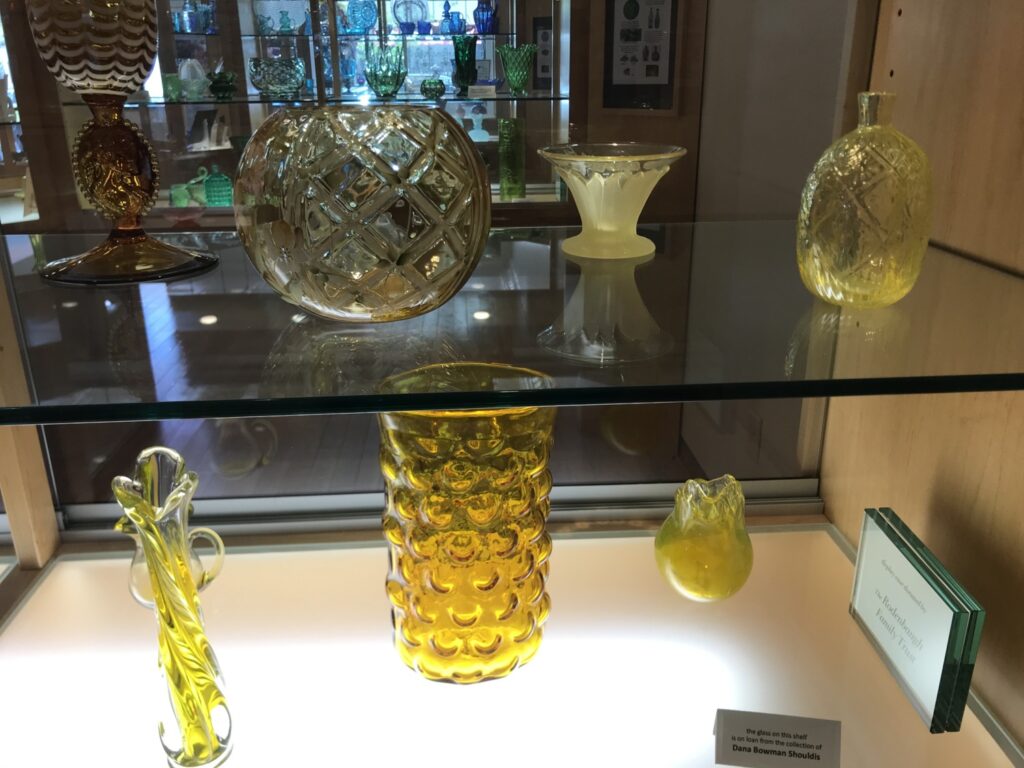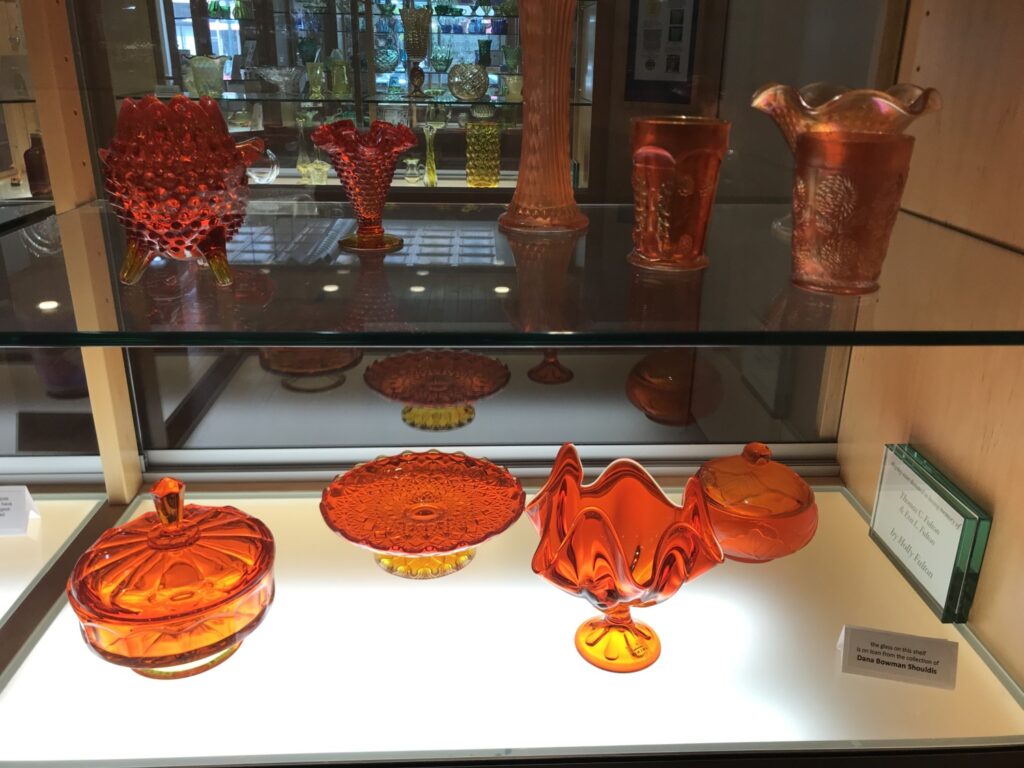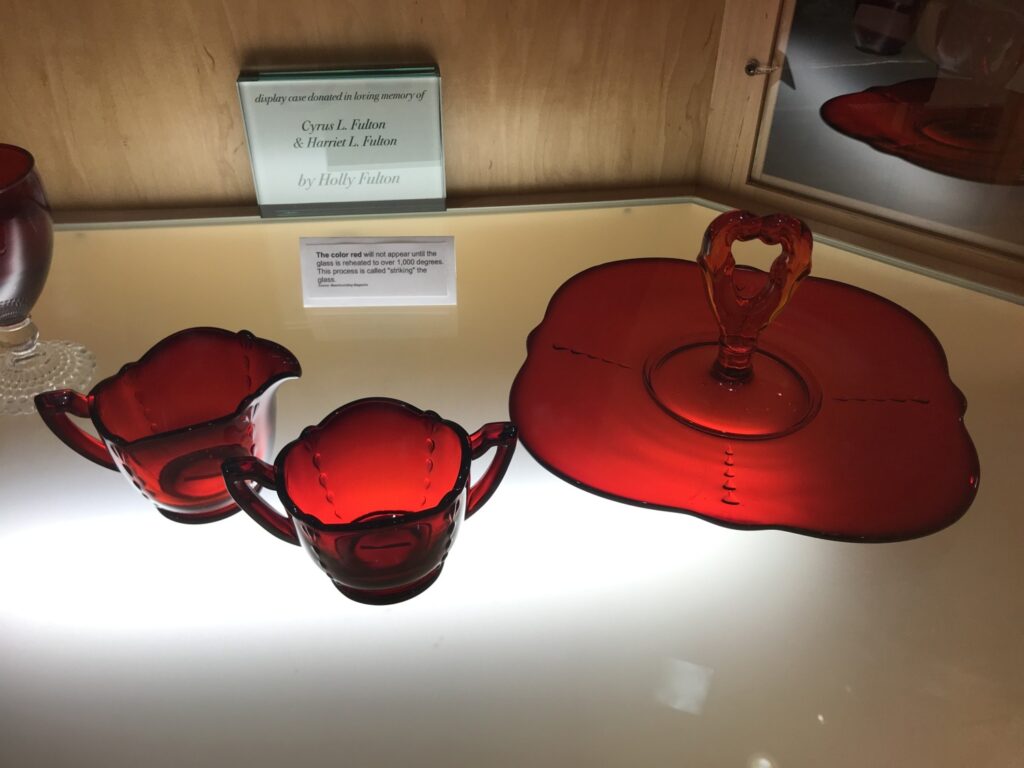The reason we went to Lancaster was to see the Ohio Glass Museum. I learned about it when I was researching trifle bowls, which mostly seem to be made by Anchor Hocking in Lancaster. I thought it would be interesting to see such a big glass plant still in operation, but they don’t give factory tours. Then I wanted to go to the Anchor Hocking store. But they don’t have a store – they sell at all kinds of different stores, including the Ohio Glass Museum gift shop.
Okay then. Ohio was once the center of glass-making in the United States. Ohio has an abundant supply of the natural resources needed in glass-making: sand, soda ash, limestone, sandstone, and metals. The earliest glass manufactories in Ohio date back to 1800. With the discovery of natural gas in Ohio in the late 1800’s, glass-making really took off as an industry. Abundant fuel, railroads, and waterways made manufacturing and shipping more affordable.
Anchor Hocking in Lancaster and Owens-Illinois in Perrysburg are two big factories still making glass today. Owens-Illinois is the second largest producer of glass bottles in the United States. The Toledo Museum of Art has a glass pavilion and over 10,000 glass items in its collection. It is the largest “glass museum” in Ohio.

The Ohio Glass Museum was established in 2002. It celebrates the history of glass from all over Ohio and has rotating displays that highlight different aspects of glass-making. They also have a glass-making studio and have glass-making classes. The studio was not open the day we visited.
We parked at a lot next to the Ohio Glass Museum and bought our tickets from the volunteer in the gift shop. Our tickets were only $5 each because we were all Seniors and Dad’s ticket was $4 because he is a Veteran. A docent showed us around the museum and answered our questions. We were the only people in the museum on a Thursday afternoon so he had plenty of time to talk to us.

The museum building is a former bank and the rooms were divided up into several different areas. Different manufactories has a small section devoted to their glass and it was interesting to see some of the differences. Glass made today is molded or molded and machine blown. The historic displays of glass caught our attention, such as the cathode ray tube made by Anchor Hocking. I thought the Erickson glass, with its distinctive pattern of tiny bubbles in the glass was especially beautiful. We also watched a very good movie on making a glass paperweight.
The largest display was the rotating display. The current display discussed how the manufactories got the different colors of glass. Each display case held a different color and they were beautiful next to each other, with all the colors of the rainbow. Orange glass is made with cadmium. Yellow glass with sulfur. Blue glass has cobalt added. Purple glass is made by adding manganese or selenium.

There was a small display on the history of glass-making in Ohio, although there are too many companies that made glass for it to be very comprehensive. We also saw some glass that was manufactured in Lancaster between 1820 and 1850. Unlike other antiques, glass doesn’t show its age at all.
All of us found the Ohio Glass Museum to be very interesting. We spent some time in the gift shop admiring the beautiful paperweights and glass balls made there by the glass-blowers. The gift shop also had several items made by Anchor Hocking, but not the trifle bowl that I wanted. Despite that, we enjoyed our visit very much and were all glad we went.

